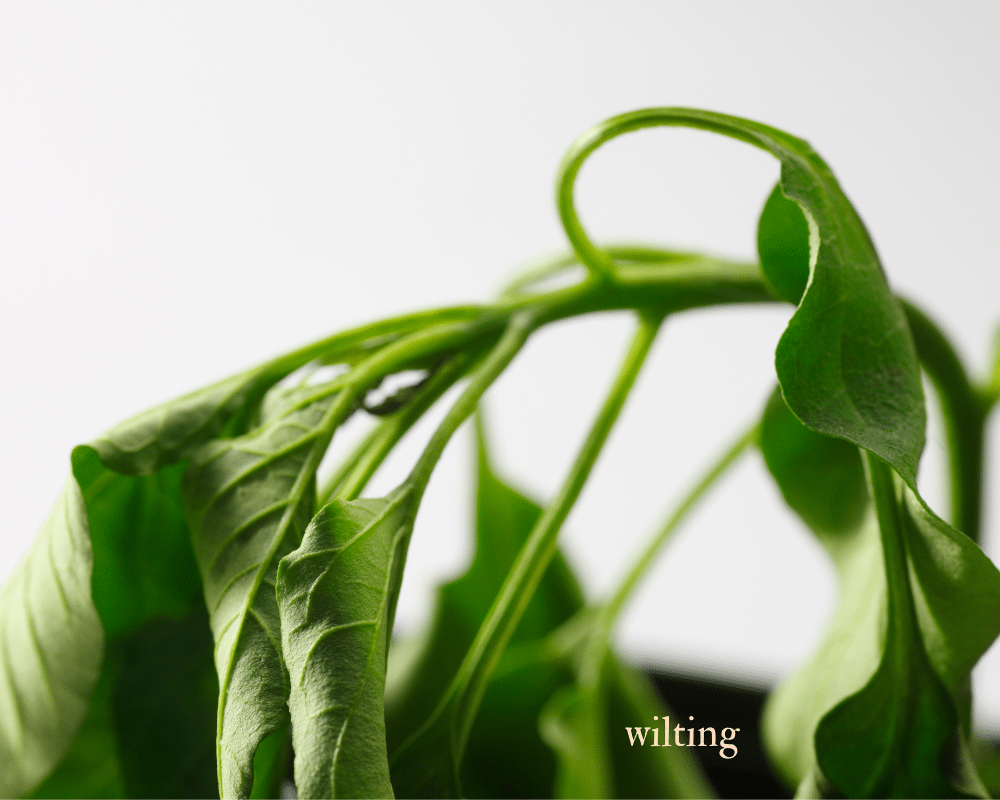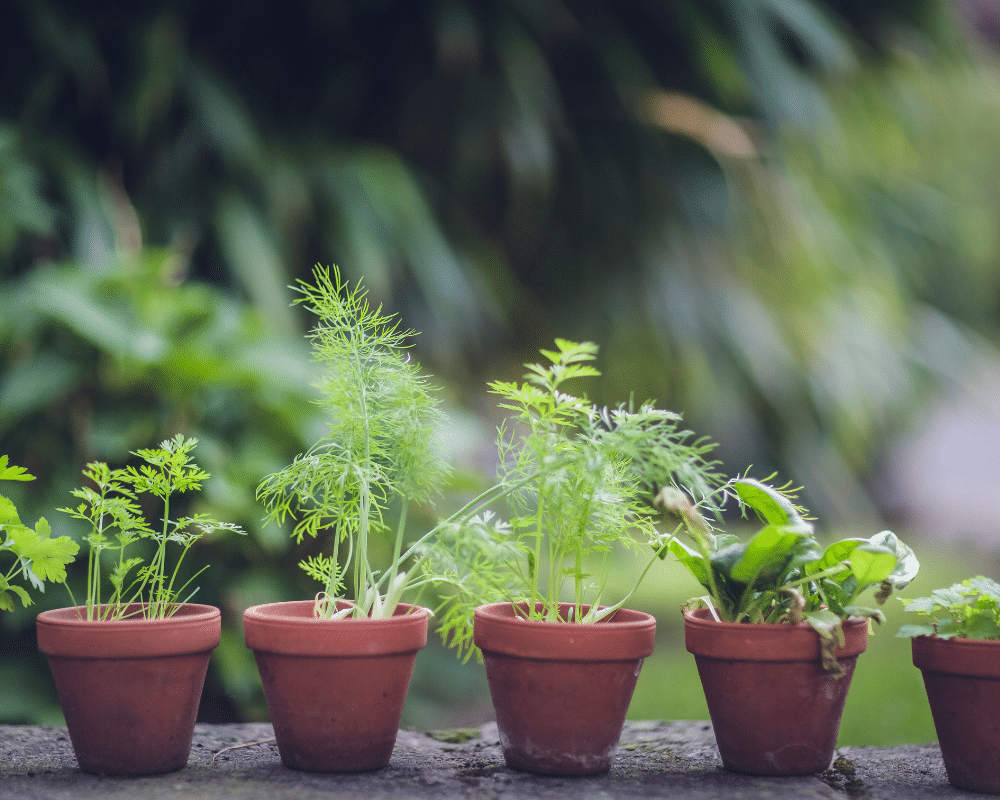Hands-On Advice From A South Florida Gardener
Why You Will Want To Grow Heat-Tolerant Herbs!

This is about the challenges we face when growing kitchen herbs in the extremes of summer heat. For us who are gardener-cooks, the need for fresh flavors does not decline because we are in the ‘dog days’ of summer. The need for bright herbal flavors will increase as we create meals in these hot months. Herbs are easy-to-grow flavor improvers and are always available in the kitchen if you grow them yourself.
Just How Much Heat Is A Problem In The Herb Garden?
The answer is above 85 degrees Fahrenheit. This is the point at which most garden plants begin to show heat stress. Depending on your garden’s plant hardiness zone your herb garden will be exposed to this heat for days, weeks or even (like our garden) months! (USDA Plant Hardiness Zone Map) The longer plants are exposed to extreme temperatures the more likely the damage.
How Does Heat Damage Your Plants?

When the temperature warms, plants grow faster. But when it gets very hot, their growth rate slows down. That’s because photosynthesis, the way plants feed themselves, slows down, while transpiration, the way leaves release water to the air, speeds up. You can see this in wilting leaves as they try to reduce water loss. Eventually, the plant uses up its food reserves and begins to die.
How About My Garden Location?
If your garden is north of zones 8-7, you can usually handle the problem of hot days when they arrive. However, in warmer zones, you will need to plan your garden location far ahead of the summer.
How To Protect Your Herb Garden From Extreme Heat

- In any planting zone, wherever your garden is located try to plant herbs on the south side of your house or some area that gets morning sun and afternoon shade.
- If that is not possible consider a covering in extremes of heat.
- Herbs grow very well in containers, and you can move your plants to shady places if the heat is extreme. Any herbs grown in containers will require more water than plants in the ground where roots can reach for water.
- In hot climates, the steps above are standard procedures.
- Improve your garden soil with amendments and use high-quality potting soil. These two pieces tell you how we add nutrition to Garden Soil and Potting Soil.
- Water well and early in the morning. Consider drip systems for herb gardens.
- Continue your fertilization plan but remember in wet summers fertilizer can wash through the soil quickly and not be used.
The Best Heat-Tolerant Herbs For Your Summer Garden
Some plants are considerably more heat-tolerant than others, and this is especially true for culinary herbs. See the list below for the most heat-tolerant herbs you can grow. Choosing them and being attentive to their hot weather needs will keep you eating fresh, and flavorful food all summer long.
First, The Least Heat-Tolerant Herbs In Your Kitchen Garden
Spring is the season for these delicious herbs, but they don’t do well in the heat. They’re the first to bolt (flower, produce seeds, and die) in the garden. If you’re looking for alternatives, I think you’ll recognize the herbs on the list below. They may not be exactly the same as your favorites, but they’re bright and tasty. And for those who love cilantro, you may even prefer the substitute!
| Herbs That Hate The Heat | Substitutes |
| Chervil-for soup, eggs, poultry, fish and bernaise sauce. Chervil is the essential herb of spring, especially in French cooking. Use it wit springtime recipes. | No Chervil? Try parsley, tarragon or a mixture of the two. |
| Cilantro- your favorite flavoring for salsa, guacamole, soup and rice. It hates the heat. | Consider basil, Thai basil, and parsley in your dishes. |
| Dill-the delicious feathery leaves benefit any fish dishes, potato salad, lentils, but the feathers fail in hot weather. | Add rosemary, thyme, and parsley, they will survive longer in the summer. |
My List Of The Most Heat-Tolerant Herbs
I’ve found that South Florida is the epicenter of heat-tolerant herb growing. The hot and dry climate is similar to other regions where herbs thrive. In fact, we don’t even try to grow lavender here!
Growing Herbs In Hot And Wet Climates
In hot and humid climates, fungal diseases can quickly spread through your herb garden. To prevent this, plant only disease-resistant varieties, and be vigilant in removing any damaged plants you see. Also, don’t add damaged plant material to your compost pile.
Annual Plants In Your Herb Garden
Use heat-tolerant, colorful small annuals in the garden. They add color, some flowers are edible and they will attract beneficial insects and discourage some of the trouble makers. It is early May as I write this and the heat is rising, the pool is beckoning. We have impatiens around the house, they are large and vibrant but soon we will need to replace them with other color sources. Vinca are similar and perform in our hot, soggy days.
Here are the plants we rely on for fresh garden flavors in our steamy summers.

BASIL Ocimium basilicum, I use a lot of basil in the kitchen and take cuttings to continue my plants. I cook with different varieties, mostly the sweet Genovese basil with large leaves. In hot and dry climates, gardeners report that it is long-lasting. In South Florida, however, we see a lot of fungal diseases. To combat this problem, I have added Amazel Basil Ocimum Amazel Basil, a new variety developed by the University of Florida and designed to be disease-resistant. This is its first summer in our garden. I’ll report on my progress.

CHIVES—Allium schoenoprasumThere are two varieties of chives: garlic chives, which have white flowers, and onion chives, which have lavender flowers. Some say that chives are not summer hardy, but my garden pots beg to differ—both varieties have lasted all summer for me, every summer so far. If you have a sunny spot in your garden, I recommend giving chives a try.!

CULANTRO-Eryngium foetidum. Cilantro is a delicate herb and disappears in our garden as soon as heat arrives. In warm climates the preferred substitute is cilantro. It has elongated saw-toothed leaves, looking nothing like cilantro although the scent and flavor are similar. Being much stronger in flavor so use about half as much as you normally would.

LEMONGRASS–Cymbopogon citratus. Lemongrass is a tropical grass that will get tall, with blades ranging from 18-36″. It is not cold-hardy, so use it as an annual in temperate climates. It is perennial in zones 9-10. Use its citrusy flavor in soups, salads, curries, and meat dishes.

MINT–Mentha. Mint is a perennial that is both decorative and flavorful. It should last for multiple years, but sometimes the normally bushy plant will become thin late in the summer. Mint is an aggressive, spreading grower with a pungent scent. Remember to give it its own container. Mint can be used to add a refreshing brightness to a variety of dishes.

PARSLEY-Petroselinum crispum. Parsley is an endlessly useful herb. I keep two plants in the pool patio area just outside the kitchen. This is a biennial plant one if from last year one from this year. There is often a third in the herb garden, steps away. We are told that parsley should not survive the summer in the tropical zone ten areas. Our plants, however, consistently last all summer. They grow in the screened pool cage area which reduces the sun and in a a garden partially shaded by a palm.

OREGANO is a flavorful herb that is rich in antioxidants. It loves the sun and can be used in a wide range of dishes. However, oregano sometimes weakens in our late summer heat. If it does, try Cuban Oregano (Coleus amboinicus). It doesn’t come from Cuba and it is not a true oregano, but it has an oregano-like scent and flavor. Cuban Oregano is strong, so use about half as much as you would use of true oregano. It doesn’t care about hot summers and will survive any weather emergency.

ROSEMARY–Salvia rosmarinus (formerly Rosmarinus officinalis).Rosemary is now classified as a Salvia, although it was once considered its own species. Why was the name changed? As a Mediterranean herb, its preferred climate is hot and dry, but it survives our humidity. We grow it in containers that we can occasionally move out of the rain. You can blend rosemary with other herbs for a complex flavor or use its bold and woodsy flavor on its own.

(THYME)–Thymus vulgaris.Thyme is a small plant that is often listed as a heat-tolerant herb. However, in our humid climate, thyme sometimes survives the summer heat and sometimes doesn’t. Growing thyme indoors is an alternative to planting it in the garden.

WINTER SAVORY–Satureja Montana. Its flavor is a combination of thyme and sage. Here is an article with a good recipe for using it with beans.
Summary
Summer is coming, and the heat is on! If you want to enjoy fresh herbs all summer, start growing them now, before the temperature gets too high. Choose heat-tolerant varieties, and be sure to water them early in the day and provide shade in the hot afternoons. Check your plants daily for pests and diseases, and harvest and use your herbs as soon as they are ready. This will help keep your plants healthy and your meals flavorful!
